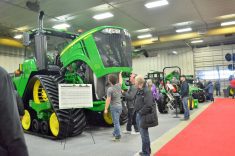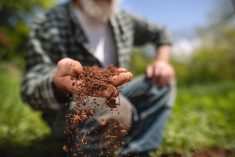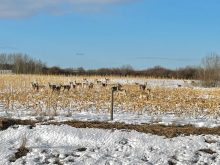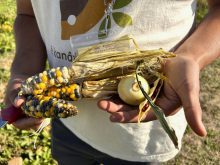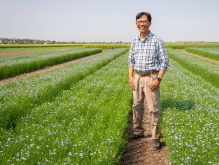As a neophile, Zach Koscielny considers himself lucky. He always likes to try new things and he’s been given the space to do so on the family farm.
He’s heard stories of younger generations running into conflicts with their elders about trying new things.
“As long as I could show them some research or show that somebody else had some success, my parents have been open to giving new things a try,” he says. “I’m lucky that they are open-minded enough to try some of these wild, crazy things because we are kind of swimming upstream.”
Read Also
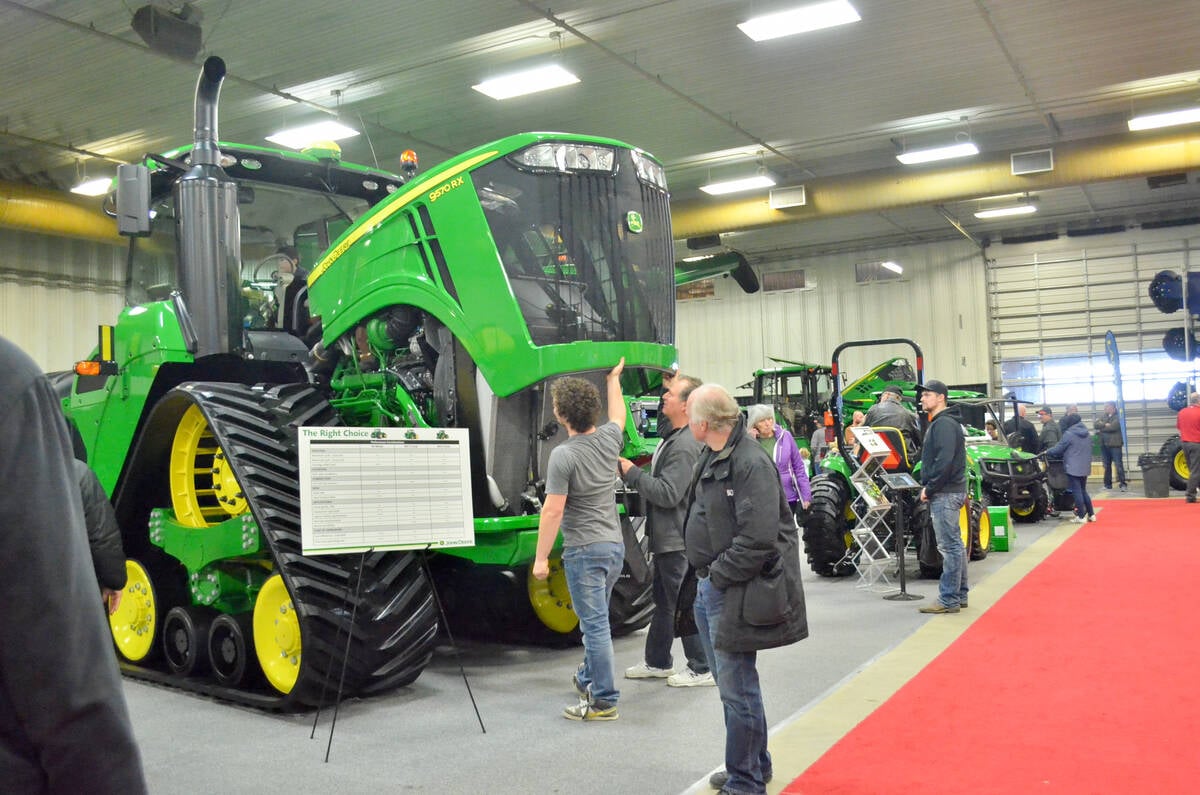
Manitoba Ag Days 2026 coming up fast
Canada’s largest indoor farm show, Manitoba Ag Days, returns to Brandon’s Keystone Centre Jan. 20-22, 2026. Here’s what to expect this year.
Koscielny is a fifth-generation farmer and owner/operator of Green Beach Farm and Food in Strathclair, Man. Green Beach Farm is mainly a cow-calf operation, and he’s not the first of his line to go out on a limb.
“My grandpa did some really strange things,” says Koscielny, recalling his maternal grandfather’s experiments with growing potatoes and lentils on their land, which is unusual for that part of Manitoba.
“I don’t think there’s anybody growing lentils in this part of the province today,” he says. “He was always trying different stuff and was always open to new things.”
Koscielny’s uncle also began rotational grazing in the 1980s.
“That was kind of wild and crazy back then, so maybe there is a bit of a family cultural thing.”

The uncle raised purebred Charolais cattle, which was the main focus of the farm through the 1990s until the BSE crisis hit in 2003.
“They had luckily downsized just before prices went to heck, but they did keep their best 30 replacement heifers,” he says.
Shortly after that, the family began to delve into direct marketing, which expanded into eggs and pork as the years went on. At a relatively small 750 acres, outside-the-box thinking has always been necessary to get the most out of the land.
So, the direct marketing approach was a natural progression. For the same reason, they recently set aside 100 acres to farm organic grain.
Cutting edge
Koscielny took over farm operations full-time shortly after he graduated with a degree in agro-ecology from the University of Manitoba in 2018. And of all the novel ideas he’s seen take hold at the farm, pasture management has had the biggest impact.
“It has completely changed my outlook on how many animals we could support on our acres here,” he says.
Though his uncle began rotational grazing in the 1980s, not much had been done since then in terms of pasture management. But in 2018, Koscielny began making the transition from rotational grazing to what is known as adaptive multi-paddock grazing (AMP).
It’s a variation of a rotational grazing system that involves dividing a large pasture into smaller paddocks and rotating livestock through each paddock in a planned yet flexible manner.
Doing this gives the soil more time to recover from grazing, which can improve soil health and increase productivity of the land. Another benefit is that grazing animals consume a more diverse array of plants, which can improve the nutritional quality of their diet.
AMP also reduces the need for external inputs such as fertilizers, herbicides and pesticides.
The transition took time.
“You start with little pieces, and you learn from them and build on them,” Koscielny says. They began by tightening up their paddocks and moving cattle more frequently in the summer of 2018. Within a couple of years, they were doing daily moves.
“Now, we’re moving every day all summer, sometimes multiple times a day,” he says. “We were shortening our grazing period and extending our rest periods for the pasture. That’s really helped us grow.”
While the transition paid off, there were challenges, not the least of which was doing it during a lengthy drought. But the changes soon began to pay dividends.
“We were seeing improvements, but you can’t do a whole lot if it doesn’t rain,” says Koscielny.
The pasture management changes allowed them to ride out the drought without having to buy any hay. Cattle were still able to graze in late August and early September.
“Some people had been feeding bales for a month already.”

Growth curve
Despite the drought, they saw increased forage production and were even able to grow the herd a bit.
“We didn’t make any big purchases or anything, but we kept some additional replacement heifers,” says Koscielny. “We were growing by 10 or 12 animals a year through those dry years.”
Another challenge exacerbated by the drought was the need for water infrastructure. They had some of that infrastructure because of the farm’s history with rotational grazing, but in the end, it wasn’t enough.
“There were sloughs and dugouts on this farm that neither my dad nor my uncle had seen go dry in their 40 or 50 years here,” says Koscielny. “That was really frustrating. It made me want to open the gates and let them wander back to the main water source. But we stuck with it.”
And then, in 2022, the rain returned.
“The pasture exploded,” says Koscielny. “That really set us up well for taking advantage of that growth. We had extra feed, and now we’ve added more animals.”
But while the rains were welcome and provided a much-needed boost, the operation’s improved prospects can’t all be attributed to weather.
“It rained last year, and that helped. But I think we really saw the boom in forage production last year because of our better management.”
With the success he’s had with his pasture management system Koscielny says he has no regrets about making the changes, but he probably would have approached it differently if he had known what he knows now.
“If we had started doing it in a contained area to start with, that would have been a lot smoother. But sometimes I just like to jump in and figure it out on the fly.”
At 26 years old, this likely isn’t the last experiment Koscielny will undertake on his farm.
“We have to use what we’ve got and try and improve the economics and the return per acre on what we are managing. And every year, I just see more and more opportunities.”
Koscielny says the trick to being a neophile is to remain open-minded but be sure not to bite off more than you can chew.
“It certainly doesn’t always work out. But we try and keep the experiments small, then tweak them and move forward.”




